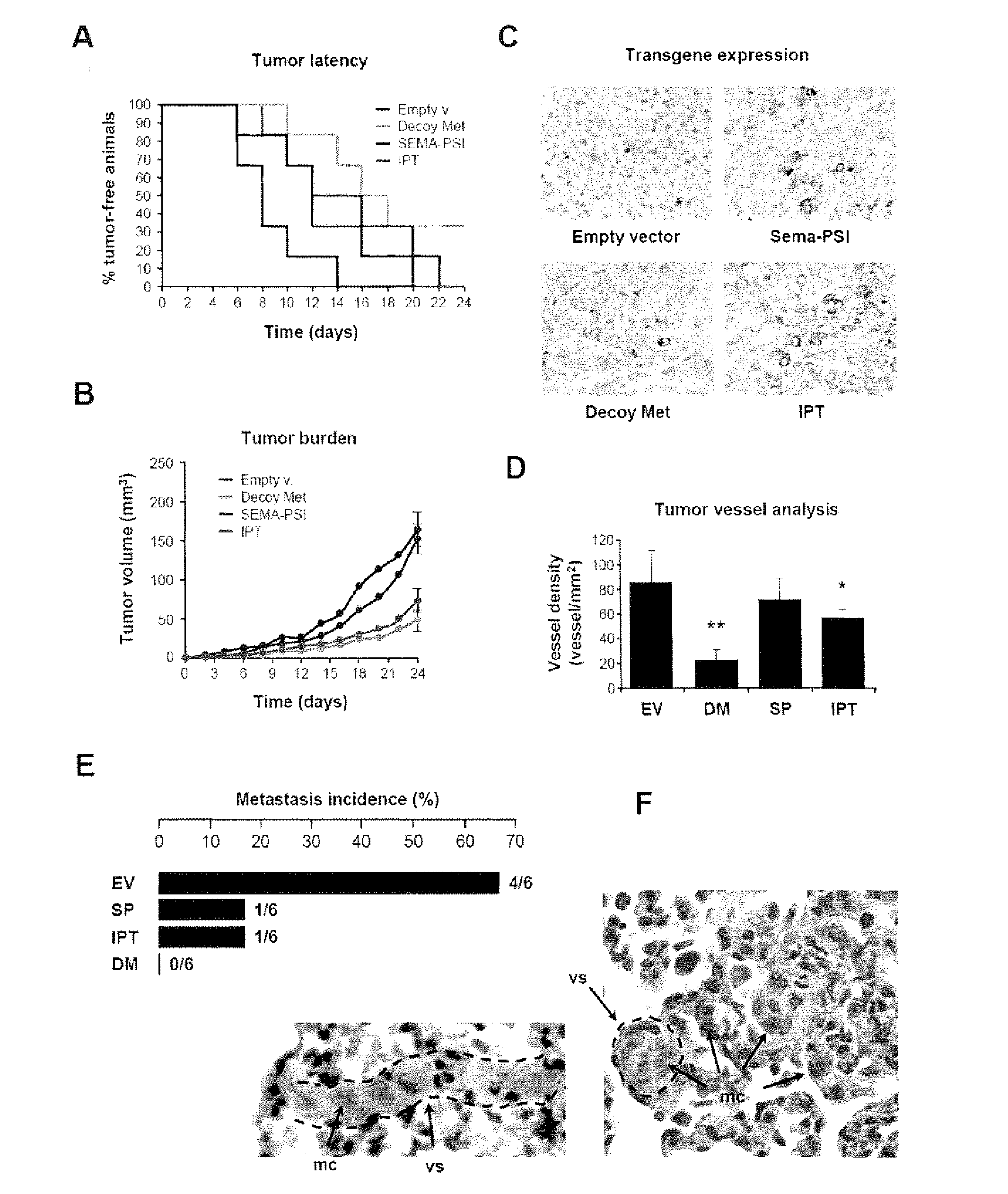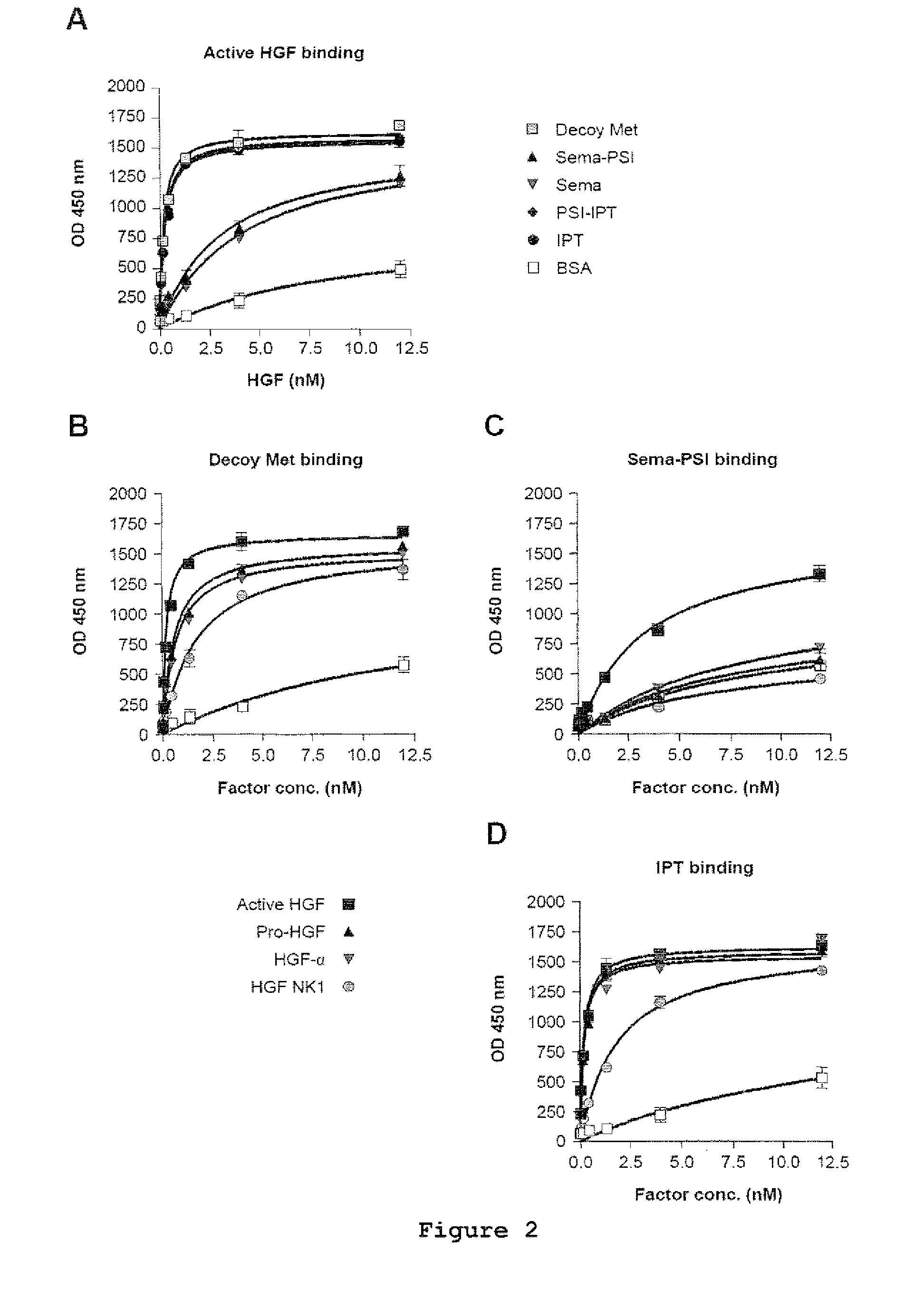High affinity binding site of hgfr and methods for identification of antagonists thereof
a high affinity binding and hgfr technology, applied in the field of hgfr protein, can solve the problems of lack of proteolytic activity of -chain, etc., and achieve the effects of reducing side effects, improving sensitivity, and improving therapeutic strategies
- Summary
- Abstract
- Description
- Claims
- Application Information
AI Technical Summary
Benefits of technology
Problems solved by technology
Method used
Image
Examples
Embodiment Construction
[0021]The present invention will now be described in detail in relation to some preferred embodiments by way of non-limiting examples with reference to the annexed drawings, wherein:
[0022]FIG. 1 shows the engineering and purification of Met and HGF subdomains. (A) Schematic representation of the engineered proteins used in this study. Left panel: engineered receptors. W.T. MET, wild-type Met; EXTRA, extracellular portion; INTRA, intracellular portion; SP, signal peptide; SEMA, semaphorin homology domain; PSI, plexin-semaphorin-integrin homology domain; IPT 1-4, immunoglobulin-plexin-transcription factor homology domain 1-4; TM, trans-membrane domain; JM, juxta-membrane domain; KD, kinase domain; CT, C-terminal tail; E, FLAG or MYC epitope; H, poly-histidine tag. The red triangle indicates the proteolytic cleavage site between the α- and β-chain. Right panel: engineered ligands. W.T. HGF, wild-type HGF; ND, N-domain, K 1-4, kringle 1-4; PLD, protease-like domain; UNCL. HGF, Uncleavab...
PUM
| Property | Measurement | Unit |
|---|---|---|
| Stability | aaaaa | aaaaa |
| Cell proliferation rate | aaaaa | aaaaa |
Abstract
Description
Claims
Application Information
 Login to View More
Login to View More - R&D
- Intellectual Property
- Life Sciences
- Materials
- Tech Scout
- Unparalleled Data Quality
- Higher Quality Content
- 60% Fewer Hallucinations
Browse by: Latest US Patents, China's latest patents, Technical Efficacy Thesaurus, Application Domain, Technology Topic, Popular Technical Reports.
© 2025 PatSnap. All rights reserved.Legal|Privacy policy|Modern Slavery Act Transparency Statement|Sitemap|About US| Contact US: help@patsnap.com



